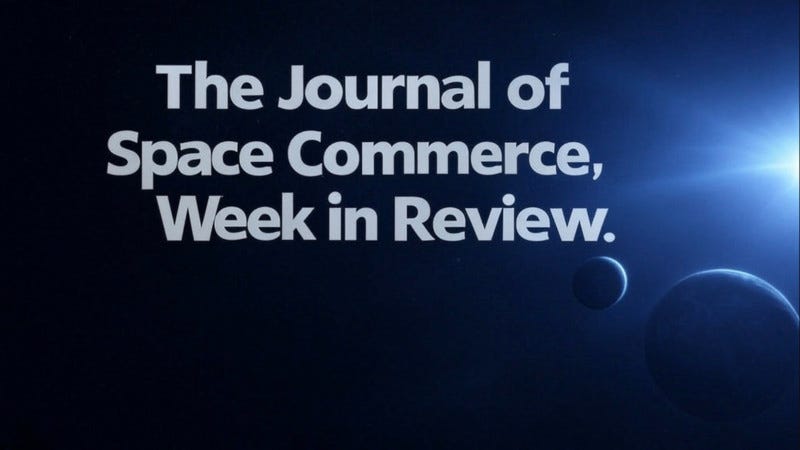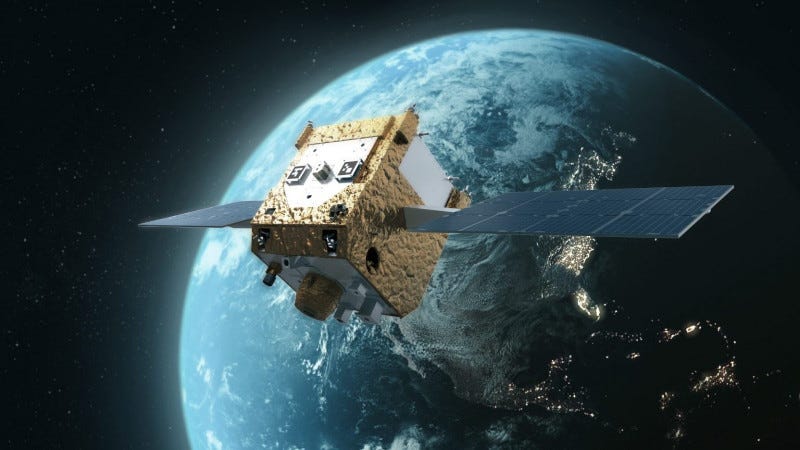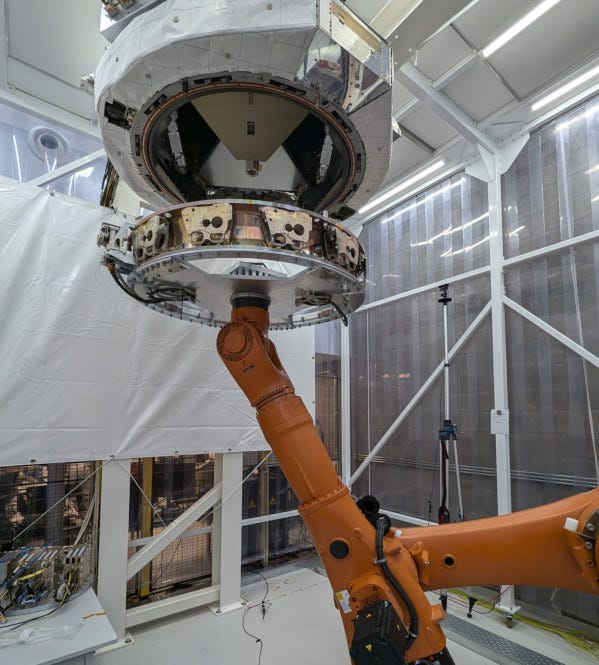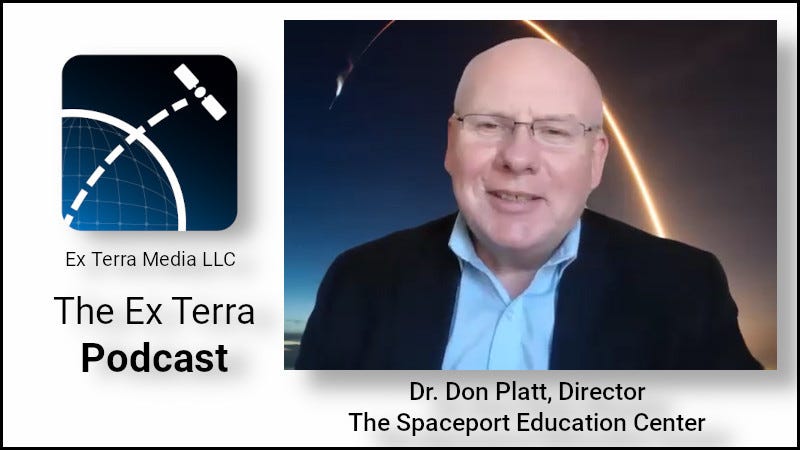Obtaining Space Situational Awareness Data, and a Curriculum for the Final Frontier. Here are some of the top stories from The Journal of Space Commerce this week.
The Office of Space Commerce (OSC) has released a Request for Information seeking input on a future multi-vendor contract structure for obtaining space situational awareness (SSA) data and services. Responses will help shape OSC’s acquisition strategy for commercial data and services to integrate into the Traffic Coordination System for Space (TraCSS).
The Office of Space Commerce’s TraCSS program is interested in establishing a multi-vendor Blanket Purchase Agreement (BPA) or indefinite delivery/indefinite quantity (IDIQ) to obtain commercial SSA data and services in support of the TraCSS mission. The program is seeking industry input on the attributes of a BPA or IDIQ that would allow flexibility and maximal participation by vendors. The program is also seeking input from industry on other acquisition vehicles that might address the need to engage broadly with the commercial SSA industry for data and services for TraCSS.
Responses to this Request for Information are due no later than 12:00 p.m. (EDT), May 6, 2025. Details on how to respond are available on the Office of Space Commerce website.
-0-
The global space service market size was valued at $30.2 billion in 2023, and is projected to reach $67.9 billion by 2033, growing at a CAGR of 8.8% from 2024 to 2033 according to a new report from Allied Market Research. Space service refers to a broad range of commercial, governmental, and defense-related activities that utilize space-based infrastructure, technologies, and operations to provide services on Earth and beyond, including activities in low Earth orbit (LEO), and geostationary orbit (GEO).
One of the most significant drivers of the space service market is the rising demand for satellite-based services, including telecommunications, earth observation, and navigation. However, high costs associated with space missions and satellite deployments and regulatory and legal challenges in space operations are anticipated to hamper the growth of the market during the forecast period. Moreover, rise in demand for space tourism and commercial spaceflight and the expansion of in-orbit services are expected to offer lucrative opportunities for the market in the future.
The satellite services segment held the highest market share in 2023, owing to the rise of high-speed satellite internet. Communication satellites accounted for a dominant market share in 2023, due to a rise in demand for high-speed internet, military communication needs, and the expansion of 5G networks.
The small payloads segment accounted for the largest market share and is anticipated to maintain its dominance till 2033, and the same segment is expected to witness the highest CAGR of 9.3% during the forecast period fueled by lower launch costs, shorter development cycles, and advancements in miniaturized technology.
North America accounted for the largest market share and is anticipated to maintain its dominance till 2033. However, the Asia-Pacific is expected to portray the highest CAGR of 9.8% during the forecast period.
-0-
Two refueling operations of a U.S. Department of Defense (DoD) satellite in geostationary orbit (GEO) for the United States Space Force (USSF) will be conducted by Astroscale U.S. next year. The mission is designed to demonstrate the ability of commercial Servicing, Mobility and Logistics providers to deliver on-orbit capabilities supporting the warfighter.
The Astroscale U.S. Refueler will be the first spacecraft to conduct hydrazine refueling operations above GEO and will be the first-ever on-orbit refueling mission supporting a DoD asset. This mission will establish space heritage for scalable refueling services, a critical step toward enabling sustained maneuverability.
-0-
A contract to provide four docking mechanisms for the European Space Agency’s habitation module for the Lunar Gateway (the Lunar I-Hab) has been awarded to Redwire by Thales Alenia Space. Redwire’s wholly-owned Belgian subsidiary, Redwire Space NV, has been awarded the contract to deliver the International Berthing and Docking Mechanism (IBDM) for the Lunar I-Hab.
The contract includes one active IBDM that will couple Lunar I-Hab to the rest of the Gateway; and three passive systems, which will be used as a docking port for other modules or visiting vehicles. The IBDM will enable safe transfers of crew and cargo, supporting continuous operations and missions within the Gateway lunar space station.
Mike Gold, president of Civil and International Space at Redwire, explains the significance of the contribution to the project.
"We are working for Thales Italy, in this case, to support the international berthing and docking mechanisms for I-HAB. And this is the systems, as the name indicates, that will support berthing and docking. As someone who has dedicated his entire career to bringing people together in space, it's wonderful that through the Artemis Accords ... and they have done that proverbially ... here at Redwire we're doing it literally, where our docking mechanism will bring together modules from different nations, different peoples, representing how we can all come together in the incredible field of space exploration."
The Lunar I-Hab is ESA’s habitation module which will provide living quarters, laboratory space, and mission support infrastructure for astronauts conducting long-duration missions in deep space.
-0-
Coming up, nuclear power for the lunar night. And will NASA be moving to Texas? But right now, why not take a minute to become a paid subscriber to The Journal of Space Commerce. Whether you’re a space professional or enthusiast, paid subscribers have first access to premium articles and podcasts focused on the new space economy. Just visit www.exterrajsc.com on Substack, and help keep The Journal of Space Commerce independent as we chronicle, cajole and, when necessary, critique the commercial space industry.
-0-
A strategic agreement to jointly develop technologies that enable lunar missions to survive the harsh lunar night has been reached between ispace-U.S. and Zeno Power. The companies are targeting a demonstration mission as early as 2027 to validate this capability on the lunar surface.
ispace-U.S. and Zeno Power have signed a Memorandum of Understanding (MOU) with the goal to be the first to address NASA’s challenge and explore the integration of Zeno Power’s radioisotope power systems, (RPS) into future lunar missions.
Unlike solar panels and batteries, RPS provide continuous, reliable heat and electricity, regardless of solar availability, making them ideal for enabling a “survive the lunar night” capability.
-0-
U.S. Senate Commerce, Science, and Transportation Committee Chairman Ted Cruz and U.S. House Science, Space, and Technology Committee Chairman Brian Babin, both Texas Republicans, recently led a bicameral coalition of federal lawmakers representing Texas communities in sending a letter to President Trump urging his administration to move NASA headquarters from Washington, D.C. to the Lyndon B. Johnson Space Center (JSC) in Houston, Texas. The lease for NASA’s current DC office expires in 2028.
In the letter, the lawmakers argue that NASA is disconnected from the day-to-day work of its centers and hindered by bureaucratic micromanagement in Washington, D.C. Houston is well suited for NASA’s headquarters because of JSC’s substantial involvement in nearly everything that makes America a leader in space exploration.
Additionally, Texas boasts a strong business environment, low government regulation, a robust commercial space sector, and a cost of living that is less than half of the Washington, D.C. area. The lawmakers said moving the NASA headquarters to Texas will create more jobs, save taxpayer dollars, and reinvigorate America’s space agency.
-0-
And this week on The Ex Terra Podcast, I talked with Dr. Don Platt, Director of The Spaceport Education Center at the Florida Institute of Technology (FIT).
The center is Located next to Cape Canaveral, a real advantage for integration with industry. Its programs are relevant to current and future needs, including launch operations, mission design, and systems integration.
Dr. Platt said that the nature of work in the Space 2.0 economy is changing, and the workforce has to change with it.
"I had a mentor who liked to say that the 20th century was the age of the specialist, and the 21st century was going to be the age of the generalist. Especially in a small company you're going to have a variety of different responsibilities. Every project you might have a somewhat different role," Platt said. "No longer do you call in a specialist who, all he does is write computer software to create a calculation for a thermal analysis of a very specific system on a spacecraft. Most of the people working in these smaller companies might have to design the entire thermal control system and be well aware of how it interacts with every other component on the spacecraft and how cooling on one component can have a ramification for an adjacent component. So yes, it's definitely a very different environment in a small company where you're doing many things, and interacting with a fewer number of people. But all of the people you're working with have a varied background as well."
Next week on the podcast, I'll talk with Patrick Georgi, an economist with the Bureau of Economic Analysis, about the most recent release of statistics on the space economy. I hope you'll join me then.
And those are some of the stories we covered for you on The Journal of Space Commerce this week. You can get daily updates on space commerce by subscribing to The Journal of Space Commerce on Substack at www.exterrajsc.com. And please consider becoming a paid subscriber. Whether you’re a space professional or enthusiast, paid subscribers have first access to premium articles and podcasts focused on the new space economy. Just visit www.exterrajsc.com and help keep The Journal of Space Commerce independent as we chronicle, cajole and, when necessary, critique the commercial space industry.
I'm Tom Patton
You Might have Missed:




















